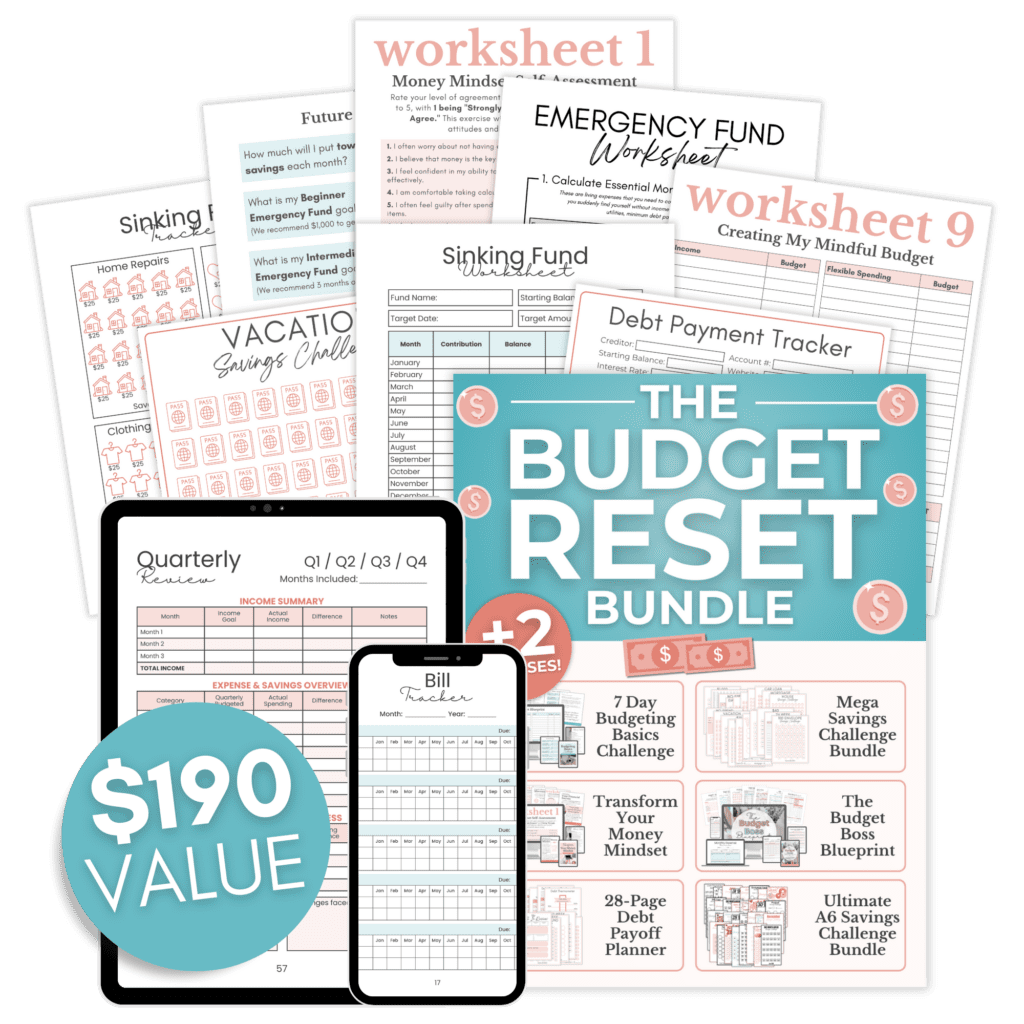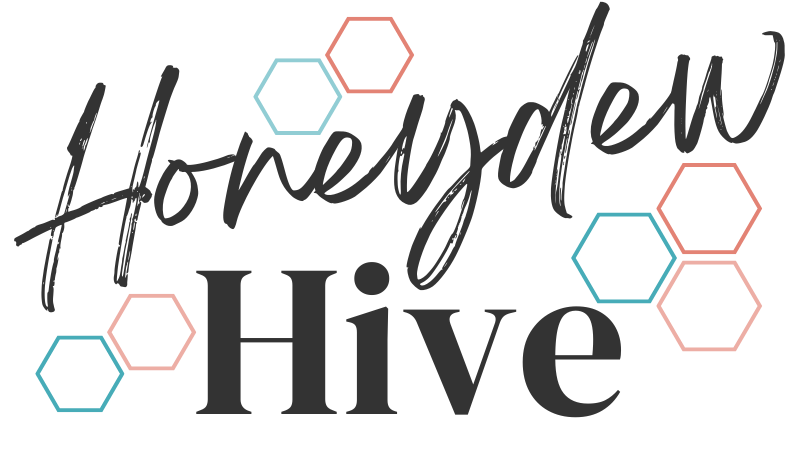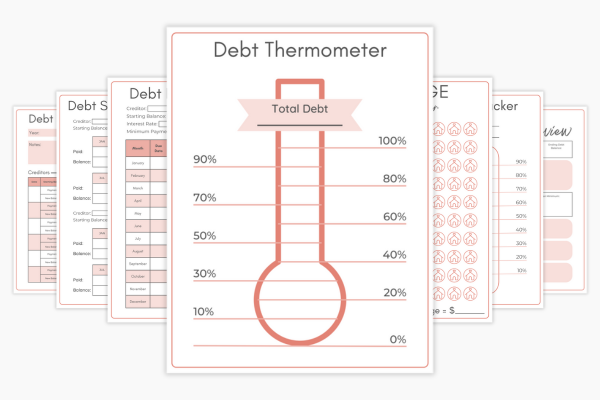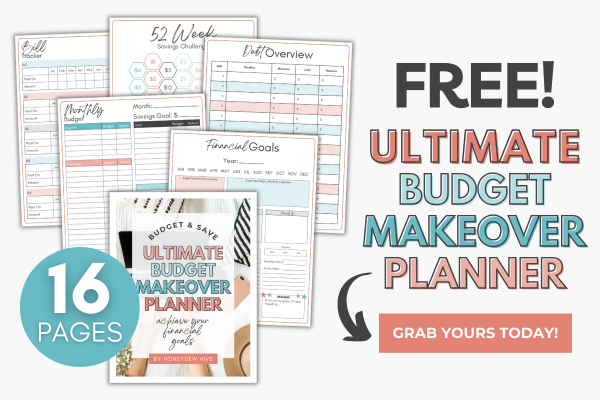Debt Snowball vs. Debt Avalanche: Which Is Right for You?

Trying to pay off debt can feel like standing at the bottom of a mountain with no clue how to start climbing. There are different strategies, different opinions, and a whole lot of overwhelm.
But here’s the truth: you don’t need a perfect plan—you just need a plan that fits your life.
The two most popular debt payoff methods are the Debt Snowball and the Debt Avalanche.
Both are smart. Both work. And both can help you become debt-free faster than just making the minimum payments and hoping for the best.
So how do you choose?
In this post, I’ll break down how each method works, the pros and cons of both, and how to figure out which one makes the most sense for your personality, money mindset, and lifestyle.
You’ll also find links to tools that can make this whole process easier:
- My printable Debt Payoff Planner if you like writing things down and seeing your progress
- And my automated Google Sheets Debt Snowball Spreadsheet if you prefer to plug in your numbers and let the math work for you
Let’s walk through both methods so you can choose the one that will help you stay motivated and make real progress—one payment at a time.
RECOMMENDED READ: How to Pay Off Debt Fast – 7 Proven Strategies
What Is the Debt Snowball Method?
The Debt Snowball Method is all about building momentum—fast.
Instead of focusing on interest rates, you focus on the size of the balance. You start by paying off your smallest debt first, while making the minimum payments on everything else.
Once that smallest debt is gone, you roll the payment you were making on it into the next smallest debt. And so on.
Each time you pay something off, your “snowball” grows—giving you more money to throw at the next debt.
Here’s a quick example:
Let’s say you have:
- $400 on a credit card
- $1,200 on a store card
- $3,500 on a personal loan
You’d pay off the $400 card first, then use that freed-up payment to tackle the $1,200 card, then move on to the loan.
The idea is that quick wins keep you motivated—and that motivation keeps you going when things get tough.
Why the debt snowball works so well:
- You feel progress quickly
- You stay encouraged because you’re seeing balances disappear
- It helps build healthy money habits and confidence
- It’s a great option if you’ve struggled with follow-through in the past
If you’re someone who needs a little psychological boost (and let’s be real—who doesn’t?), this method might be a great fit.
Want help tracking your progress?
- The printable Debt Payoff Planner includes snowball-friendly worksheets and trackers so you can visually see each balance drop
- Or, try the Google Sheets Debt Snowball Spreadsheet to automate your entire plan—it calculates your payoff timeline, interest, and more
What Is the Debt Avalanche Method?
The Debt Avalanche Method is designed to save you the most money over time.
Instead of focusing on balance size like the snowball method, this strategy focuses on interest rates. You pay off the debt with the highest interest rate first, while making minimum payments on the rest.
Once that one is gone, you move to the next highest rate.
By doing this, you reduce the total amount of interest you’ll pay—and that can shave months (or even years) off your debt timeline.
Here’s how it works:
Let’s say you have:
- $3,500 personal loan at 6% interest
- $1,200 store card at 22% interest
- $400 credit card at 17% interest
Even though the $400 debt is the smallest, you’d focus on the $1,200 store card first because it’s costing you the most in interest.
Why the debt avalanche works so well:
- You pay less in interest overall
- You may get out of debt faster (especially with high-interest credit cards)
- It appeals to the logical, math-loving side of your brain
- It’s ideal if you’re motivated by saving money and long-term results
This method can feel slower in the beginning—because your first target might be a larger balance—but the payoff is bigger.
If you’re someone who likes seeing the numbers work in your favor, this method might be exactly what you need.
To make it easier:
- Use the Debt Payoff Planner to manually organize your debts and create a payoff plan based on interest
- Or let the Google Sheets Debt Snowball Spreadsheet do the work for you—just plug in your balances and rates, and it’ll show you your best payoff order using the avalanche method
Ready to Finally Take Control of Your Money?
The Budget Reset Bundle gives you everything you need to stop the paycheck-to-paycheck cycle, create a real budget that actually works, and start saving fast. No fluff — just real tools for real change.

Side-by-Side Comparison: Snowball vs. Avalanche
Still not sure which method makes more sense for you?
Let’s break it down side-by-side so you can see the key differences at a glance:
| FEATURE | DEBT SNOWBALL | DEBT AVALANCHE |
| Payoff Order | Smallest balance first | Highest interest rate first |
| Main Focus | Emotional momentum | Long-term savings |
| Motivation Style | Fast wins to keep you going | Efficiency and minimizing interest |
| Saves More Interest? | No | Yes |
| Progress Speed | Faster emotional payoff | Faster financial payoff (in the long run) |
| Best For… | Beginners, emotional spenders, quick wins | Analytical thinkers, patient savers |
Example:
Let’s say you have the following debts:
- $400 credit card at 17% interest
- $1,200 store card at 22% interest
- $3,500 personal loan at 6% interest
- Snowball Method: You’d pay off the $400 first, then the $1,200, then the $3,500
- Avalanche Method: You’d start with the $1,200 (highest interest), then the $400, then the $3,500
The best choice comes down to this:
- If you need quick wins to stay motivated → start with snowball
- If you’re focused on saving the most money → go with avalanche
Either way, you’re making a smart move by choosing a strategy.
And the good news? Both methods work beautifully with the tools in the Debt Payoff Planner—so no matter what you choose, you’ll be organized and on track.
How to Decide Which Method Is Right for You
Here’s the truth: both debt payoff methods work.
The best one for you isn’t about what’s technically “right”—it’s about what you’re most likely to stick with.
Ask yourself a few honest questions:
Do you feel discouraged or overwhelmed by your debt?
Choose the Debt Snowball.
Paying off a small balance quickly gives you an emotional win that can boost your confidence and keep you going.

Are you motivated by saving money and seeing the numbers work?
Choose the Debt Avalanche.
It might take a little longer to feel the results, but you’ll pay less in interest and finish strong.
Do you need to see visible progress fast?
Snowball might be the better choice—especially if you’ve struggled to follow through on other financial goals.
Do you have high-interest debt (20%+), like credit cards or payday loans?
The Avalanche method will likely save you the most in the long run.
Still can’t decide?
Start with the Snowball method to get some momentum, then switch to Avalanche once your motivation is built up.
There’s no rule that says you can’t change strategies.
Whichever path you choose, the most important thing is that you’re choosing a path at all.
Need help creating your plan?
- The Debt Payoff Planner gives you space to explore both the snowball and avalanche methods side-by-side, so you can track your progress no matter which strategy you choose
- If you’re going with the Debt Snowball method, the Google Sheets Debt Snowball Spreadsheet will do all the calculations for you—just enter your balances, and it’ll show you exactly what to pay off next
What If I Want to Do a Hybrid Approach?
Good news: you don’t have to follow just one method perfectly.
A lot of people find that a blended—or “hybrid”—approach works better for their real life.
That might look like:
- Starting with the smallest debt for a quick win (snowball-style), then switching to the highest interest debt after that (avalanche-style)
- Paying off a debt that’s emotionally stressful—like a collections account or lingering medical bill—even if it’s not the smallest or highest interest
- Tackling a couple of low-balance, high-interest debts first, then reevaluating
The truth is, personal finance is personal. You don’t have to follow anyone else’s “rules.” You just need a strategy that keeps you moving forward.
If it helps you stay consistent, stay encouraged, and actually make progress—it’s a good strategy.
You can use the Debt Payoff Planner to sketch out your own custom order, rearrange your debts in whatever way makes sense for your life, and adjust as you go.
Remember: this is your journey. You’re allowed to make it work for you.
Final Thoughts: There’s No Wrong Way to Pay Off Debt
Paying off debt doesn’t have to be all-or-nothing, and it definitely doesn’t have to be perfect.
What matters most is that you pick a plan, start where you are, and keep showing up for yourself—even if the progress feels slow at first.
Whether you’re motivated by quick wins or long-term savings, the Debt Snowball and Debt Avalanche are both powerful tools.
The right one? It’s the one that feels sustainable for you.
If you’re ready to put your strategy into action:
- The Debt Payoff Planner is perfect if you like writing things down and visually tracking your progress
- The Google Sheets Debt Snowball Spreadsheet is ideal if you’re going with the snowball method and want the math done for you
And if you’re just getting started with budgeting and need a simple place to begin, grab my Ultimate Budget Makeover Planner—it’s completely free and gives you the structure to organize your finances, plan your month, and move forward with confidence.
You’re doing the hard work. You’re taking control of your finances. And every step you take—big or small—is moving you closer to freedom.


